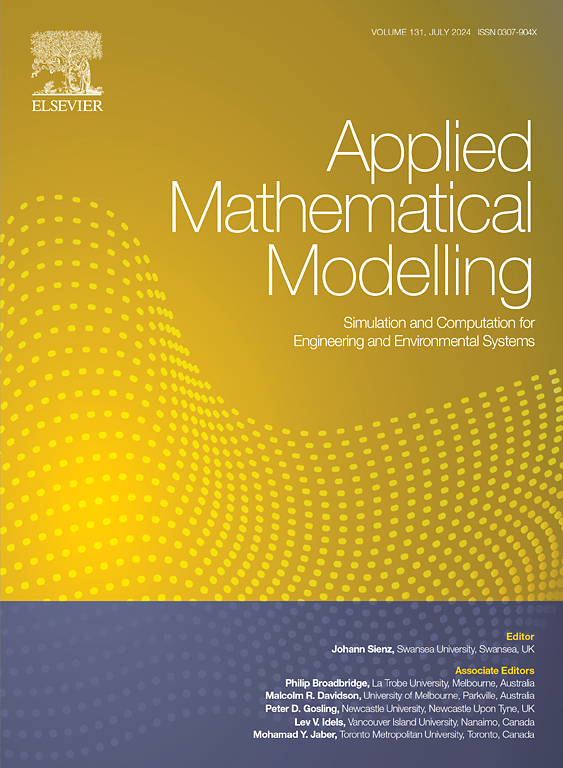Entropy consistent and hyperbolic formulations for compressible single- and two-phase flows modeling in both rigid and elastically deformable pipes: Application to Euler, Kapila and Baer-Nunziato equations
IF 4.4
2区 工程技术
Q1 ENGINEERING, MULTIDISCIPLINARY
引用次数: 0
Abstract
The mathematical modeling of compressible flows in both rigid and elastic pipes is discussed here. Both single- and two-phase flow modeling are considered in the present paper. First, the derivation of the models through the integration of the 3-D equations over the radially deformable inner pipe cross-section is described. Then, the Coleman-Noll procedure is used in order to formulate constitutive/closure laws consistent with the second law of thermodynamics leading to entropy consistent models. For elastically deformable pipes, an additional closure law relating the elastic variation of the cross-section area with the internal fluid pressure is also considered. The derivation of this closure law, classically referred to as the tube law, is also discussed here. This effective averaging procedure leads to non-conservative terms in the one-dimensional models linked to the pressure effects due to the spatial and temporal cross-section variations. The mathematical properties of the obtained system of partial differential equations, i.e. hyperbolicity, the structure of the waves, the expression of the Riemann invariants and the existence of a mathematical entropy, are then examined. In addition, the consequences of the definition of shock-waves for these models are also discussed. The Euler equations are first considered and analyzed in this context. Then, the approach is extended to more advanced compressible two-phase flow modeling. The two examples considered in the present paper are the Kapila five-equation and the Baer-Nunziato seven-equation models involving non-conservative terms due to the change of volume fraction in the balance equations which are for the first time investigated in this context. The corresponding models are shown to be hyperbolic and the characteristic fields are analyzed. Finally, some shock-tube problems in both rigid or elastic pipes are examined showing agreement with the present mathematical analysis.
求助全文
约1分钟内获得全文
求助全文
来源期刊

Applied Mathematical Modelling
数学-工程:综合
CiteScore
9.80
自引率
8.00%
发文量
508
审稿时长
43 days
期刊介绍:
Applied Mathematical Modelling focuses on research related to the mathematical modelling of engineering and environmental processes, manufacturing, and industrial systems. A significant emerging area of research activity involves multiphysics processes, and contributions in this area are particularly encouraged.
This influential publication covers a wide spectrum of subjects including heat transfer, fluid mechanics, CFD, and transport phenomena; solid mechanics and mechanics of metals; electromagnets and MHD; reliability modelling and system optimization; finite volume, finite element, and boundary element procedures; modelling of inventory, industrial, manufacturing and logistics systems for viable decision making; civil engineering systems and structures; mineral and energy resources; relevant software engineering issues associated with CAD and CAE; and materials and metallurgical engineering.
Applied Mathematical Modelling is primarily interested in papers developing increased insights into real-world problems through novel mathematical modelling, novel applications or a combination of these. Papers employing existing numerical techniques must demonstrate sufficient novelty in the solution of practical problems. Papers on fuzzy logic in decision-making or purely financial mathematics are normally not considered. Research on fractional differential equations, bifurcation, and numerical methods needs to include practical examples. Population dynamics must solve realistic scenarios. Papers in the area of logistics and business modelling should demonstrate meaningful managerial insight. Submissions with no real-world application will not be considered.
 求助内容:
求助内容: 应助结果提醒方式:
应助结果提醒方式:


